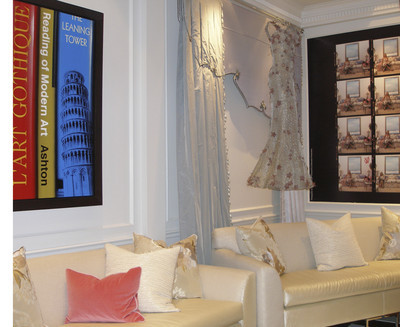Sofa purchase requires thought, good measuring

Are you in the market for a new sofa? This is one of the most important and expensive purchases you will make, as it should last at least 10 years. So, as much as you love that cherry-red love seat or the recliner with all the bells and whistles, it’s time to let level heads prevail. This should be more than an impulse buy.
Before you start your search, get out the measuring tape. There are two important reasons to measure. One, you need to know the width and height of doorways and stairwells so that you know what size will fit through the door and up or down the stairs. Believe me, I have seen walls taken down and sofas returned because they cannot be moved into the house. Two, and just as important, is scale. The sofa should not overpower the room, nor get lost in the space. Measure and tape off where the sofa will sit. This is a good time to rearrange furniture.
With the correct size in hand, ask yourself what exactly you want the sofa for. Is it a family affair or a formal living room addition, where guests should look elegant? (We have all sat in those seats that are awkward to get out of.) Will the dog be curling up with young children, or are you looking for an extra place to sleep? With size and purpose firmly entrenched (this will help with the impulse buy), you are ready to go shopping.
Here are some good buying tips. First impressions count; do you like the way the sofa looks? Sofas come in so many different styles, shapes and sizes. Cushions can be attached or loose; arms rolled or straight, bare or padded; legs carved, curved or straight. Traditional styles have two or three loose seat cushions and padded arms, which are comfy to read against. Legs are carved or tapered if bare, but might be hidden by an upholstered skirt. The more modern versions will show clean lines, perhaps a single long cushion seat, straight uncovered arms or armless. These contemporary lines fit well in small spaces, as light can flow under and around the piece.
The fabric covering is a major consideration. Leather is smooth, long-lasting and classically handsome. Velvets and silks are gorgeous, but do not wear well, which is fine in a formal setting, with limited use. Cottons and tweeds make a good choice for durability and long wear, but read the fabric content. Tight weaves promise longer wear. Dark colors and especially patterns are good at hiding soil and stains in a high-traffic area such as the family room. If you would like to be able to change the look seasonally, or want to be able to update the sofa without buying new, then look for a style that can be slipcovered.
The comfort factor comes next. Sit or lie down on the sofa; do whatever it is that you will be doing at home — recline, take a buddy and sit down together. You’ll discover quickly whether it feels good. And it should feel great. Down-filled cushions are the best, but need to be fluffed. A good and less-expensive alternative is to go with a down pad wrapped over the top of upholstery foam.
Finally, check out the quality of the sofa, inside and out. Remember, this is a big purchase and you want it to last longer than one year. The best sofas will have solid hardwood frames, screwed together. Arms and legs will also be solid, no wiggling or shifting. Cushions will have good-quality spring coils that are tied together. The sofa frame and corners should be well padded, with no hollow spaces along the back, seat or arms. Good workmanship is essential; examine the upholstery and be sure the fabric patterns or stripes match up and the trim is neat and secure.
After all is said and done, maybe that red love seat does fit all your criteria. You can go for it, guilt free!
Debbie Travis is a columnist for King Features Syndicate. E-mail questions to her at house2home@debbietravis.com.












